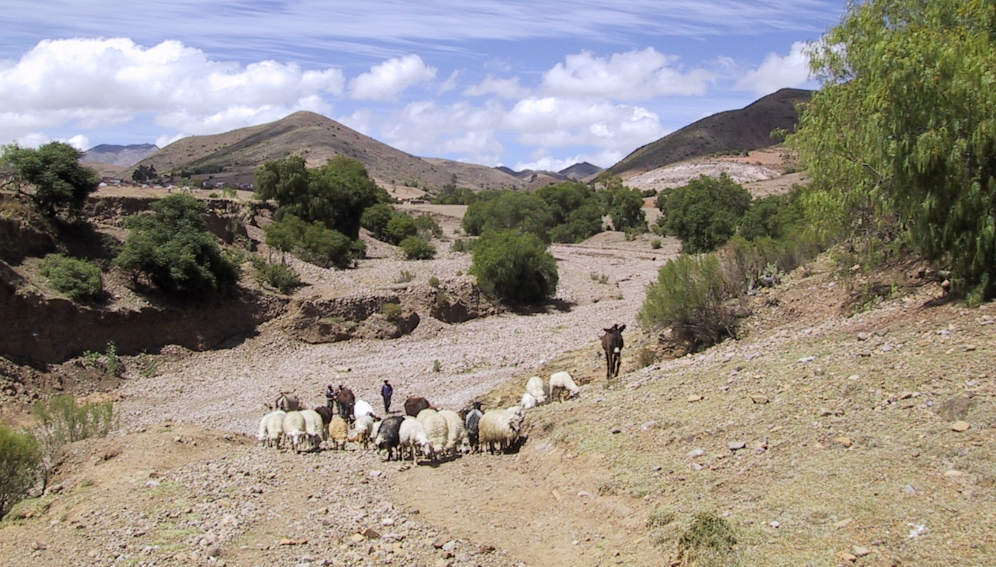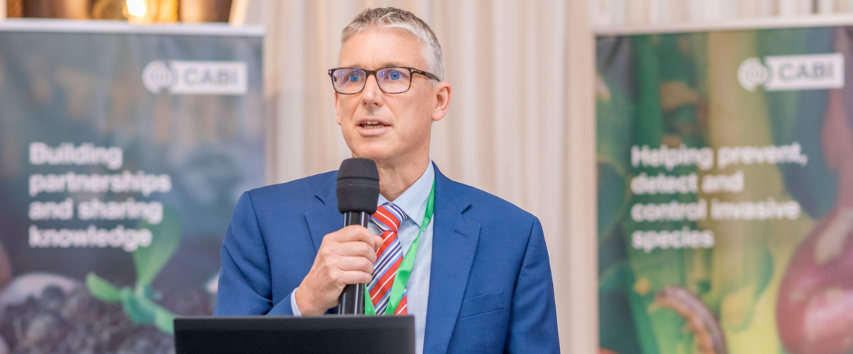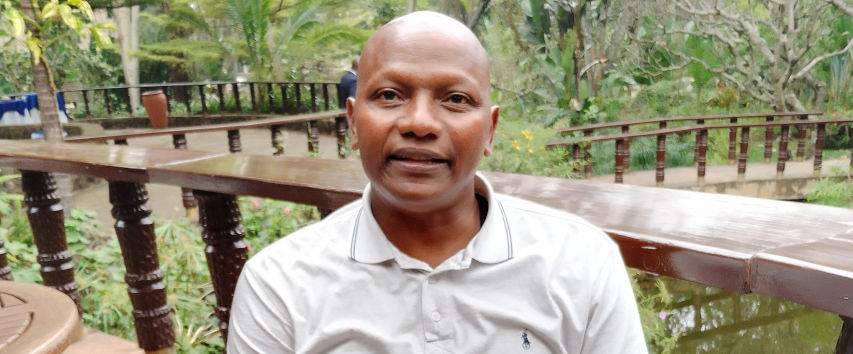22/09/23
Fresh tack needed to save landscapes hit by climate crisis

By: Dann Okoth
Send to a friend
The details you provide on this page will not be used to send unsolicited email, and will not be sold to a 3rd party. See privacy policy.
This article was supported by CABI.
[NAIROBI] Threats to livelihoods caused by biodiversity loss, land degradation and climate change across Africa will increase unless multiple challenges are tackled together to build resilience to shocks, scientists warn.
This can be done by adopting an Integrated Landscape Management (ILM) approach, which should benefit people and protect biodiversity, specialists said at a workshop in Nairobi, Kenya, organised by the agricultural research organization CABI (the parent organisation of SciDev.Net).
“Integrated essentially means that there are many issues that need to be addressed in protecting biodiversity and restoring degraded landscapes,” Arne Witt, CABI regional coordinator for invasive species management, told SciDev.Net.
“You cannot address one issue without looking at the others because an intervention in one area can have a negative impact in another area.”
Arne Witt, CABI regional coordinator for invasive species management
“It is about the people, but it’s also about the drivers.
“You cannot address one issue without looking at the others because an intervention in one area can have a negative impact in another area.”
Witt says the approach involves working with people at community level to really understand what needs to change.
Ideally, he says, the result will be a win-win situation where any intervention in a particular area not only benefits everyone with an interest in that area, but also contributes to biodiversity conservation.
“The challenge for all of us is improving livelihoods without having negative impact on the environment,” added Witt.
Invasive species
CABI chief executive officer Daniel Elger told the workshop last week (13-15 September), that CABI had “quite a few things to bring to the table” when it came to ILM, not least its experience in invasive species.
The global economic cost of invasive species has exceeded US$423 billion annually since 2019, according to a report by the Intergovernmental Science-Policy Platform on Biodiversity and Ecosystem Services.
More than 37,000 species have been introduced to new regions by human activities and these contribute to 60 per cent of global plant and animal extinctions, according to the report.
“Given that backdrop, we asked member countries participating in this workshop to look specifically at settings where the ILM approach could be applied and to choose settings where invasive species are a significant part of the problem,” Elger said.
He said CABI wanted to help communities adapt to the impacts of climate change, safeguard biodiversity and support the sustainable use of natural resources.

CABI CEO Daniel Elger speaking at the Nairobi ILM event. Copyright CABI.
‘Inclusive approach’
Felister Makini, deputy director general for crops at the Kenya Agricultural and Livestock Research Organization, said the ILM approach looked at the interests of indigenous groups and local smallholder farmers, as well as state agencies, NGOs and the private sector.
“The approach is holistic, inclusive, participatory and involves long-term collaborations of multiple stakeholders,” Makini told delegates at the workshop.
Makini said the agriculture sector in Sub-Saharan Africa faced numerous challenges such as crop yield loss, climate risks, pest and diseases, soil degradation, biodiversity loss and limited access to current agricultural information and technologies.
“All these problems transfer a lot of pressure on agricultural landscapes and natural resources—which impact food security—and household poverty levels,” she said.
Ketema Bekele, from the School of Agricultural Economics at Haramaya University, Ethiopia, pointed to the plant Prosopis juliflora (commonly known as mesquite) as an example of an invasive species in the Ethiopian Great Rift Valley.
He said the estimated economic loss to Ethiopia was US$75 million per year.
“What we have learned from past experiences is that interventions were piecemeal and fragmented, that means huge ecosystem services loss has been underway due to lack of sustainability,” Bekele said at the workshop, which brought together experts from different sectors, from Kenya, Tanzania, Malawi and Ethiopia.
Bekele said invasive species control and prevention required the sharing of knowledge, technologies and other resources between stakeholders, including smallholder farmers and indigenous groups.
The problems of invasive species, land degradation, climate change and biodiversity loss cut across national boundaries, the workshop heard.
Funding needed
Samson Katengeze, director of research and outreach at Lilongwe University of Agriculture and Natural Resources, said landscapes across Malawi were facing unprecedented challenges, including invasive species, deforestation, soil erosion, and water scarcity.
“These issues are interconnected and require holistic solutions that transcend sectoral boundaries,” he told SciDev.Net, adding that community empowerment was an important aspect of the approach.
“However, the vision of an ILM cannot be achieved without the support of donors,” Katengeze added.
“Their investment will directly contribute to research and development, capacity building, on-ground implementation and monitoring and evaluation.”
Makini said CABI could bring a unique contribution to the approach by leveraging its expertise on invasive species management and bringing diverse stakeholders together.
Adrian Bolliger, programme officer at the Biovision foundation for ecological development, said the ILM approach was important for the foundation, a non-profit organisation which helps to build sustainable food systems.
In Kenya and Uganda, the foundation supports CABI’s One Health advisory services, which enable smallholder farmers to address interrelated health and production challenges affecting crops, animals, people and the environment.
“We’re very happy to support projects that come together to create solutions,” Bolliger told the gathering via video link.
“It’s really nice to see organisations like CABI create a perspective that brings different stakeholders to create solutions to problems.”
Linus Munishi, associate professor at the Nelson Mandela African Institution of Science and Technology in Tanzania, said invasive species were now ranked among the five top threats to biodiversity in Africa.



Associate professor Linus Munishi.
“In Tanzania we have identified 45 different alien invasive species which are a threat to biodiversity and are having negative impacts on agriculture livestock and tourism, which are employers in our country,” Munishi told SciDev.Net.
He challenged development partners to adopt scientific solutions to tackle invasive species.
“Even as we develop the framework for an ILM, we need to listen to science in order to effectively tackle the problem on the ground,” he said.
This article is supported by CABI, an international, intergovernmental, not-for-profit organization that improves people’s lives worldwide by providing information and applying scientific expertise to solve problems in agriculture and the environment.
This piece was produced by SciDev.Net’s Global desk.















